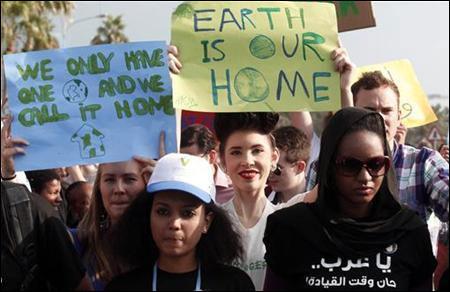 | « Back to article | Print this article |
Win-win deal in sustainable energy
Sustainable Energy Bond program is an approach that comes with a business model that satisfies all stakeholders on the good old fashioned single bottom line of money - while also offering social and environmental benefits, writes Rajni Bakshi.
There is currently a pervasive gloom about slow progress on government-level negotiations to tackle climate change. At the same time there are some creative and innovative endeavors on the ground. In this context, Sustainable Energy Bond (SEB) program, already tested and applied in parts of the USA, may have far reaching implications.
This is an approach that comes with a business model that satisfies all stakeholders on the good old fashioned single bottom line of money - while also offering social and environmental benefits.
Prof John Byrne, who has co-created this program in the State of Delaware, says that the SEB program appeals even to those who are skeptical about climate change predictions and not worried about carbon emissions - because its results in attractive cash savings.
Prof Byrne, who is Director of the Energy and Climate Policy Center for Energy & Environmental Policy at the University of Delaware was in Mumbai last week. As he explained, an SEB program is part of a larger concept known as Sustainable Energy Utility.
A Sustainable Energy Utility (SEU) is a non-profit organization that enables both energy efficiency and access to renewable energy. An SEU is not itself a financing mechanism but rather intended as a "one stop shop" that leverages financing tools, reduces transaction costs for lenders, and organizes varied stakeholders to make energy efficiency significantly easier.
For example, the state of Delaware (USA) has had an SEU since 2007. This was designed by Prof Byrne's team at the University of Delaware, and the government of that state. The first of its kind to be established in the United States this model is now being replicated in California. There is also interest in bringing it to India.
Among the SEU's programs that help to both save energy and money are the following:
The Home Performance with Energy Star Program starts with a comprehensive energy audit of a home or office, followed by recommendations on both efficiency measures and access to renewable energy. Help with raising low-interest loans to finance the structural changes is part of the program.
Compact fluorescent light bulbs, which use about 75 percent less energy than standard incandescent bulbs, are one way of reducing electricity bills. The program in Delaware has found that changing just five of the most frequently used bulbs results in substantial savings.
A Green for Green Program offers home buyers rebates of $3,000 to $6,000 for homes upgraded to national green standards for energy efficiency, water conservation, indoor air quality, building materials and other conservation-oriented, energy-saving features. Homeowners can save up to 36 percent on an average monthly electric bill.
Over a period of about eight years, the Delaware SEU aims to install efficiency measures that will reduce the energy consumption of its participants by 30 per cent, with an approximately $1000 annual saving in their energy bill. The installation of about 300 megawatts of decentralized, on-site, renewable energy capacity is expected to substantially reduce Delaware's CO2 emissions.
As Prof Byrne and his colleague Cecilia Martinez have written: "The significance of the SEU is that it offers a structural reform of the energy sector along four dimensions: one, a transition to carbon-free energy sources; two, a reorientation from energy as a commodity to energy as a service; three, transition to a distributed energy infrastructure; four, the direct involvement of energy users in energy decisions."
Much of this is being made possible by the Sustainable Energy Bond program that has allowed the Delaware SEU to issue tax-exempt bonds and collect funds from the market to fund public programs in win-win deal for all involved.
In 2011, the Energy Efficiency Bond Series issued by Delaware's SEU raised $73 million from the market at an effective borrowing rate of 3.7 per cent over the 20-year life of the tax-exempt bonds. This financing, which is flowing into investments that will result in guaranteed dollar savings, has been given a AA+ rating by Standard & Poor's.
The Foundation for Renewable Energy and Environment (FREE), headed by Prof. Byrne, is now exploring ways of applying some of these methods in India. The aim of this foundation is to lower the costs of government by helping communities to learn about and implement clean energy and sustainable development programs.
What is the potential for this approach and these methods to be adopted in India? There is no precise answer as yet but there is plenty of interest. Several people who work on renewable energy issues in India are in touch with these developments. Some of them are former students of Prof Byrne.
In an informal discussion with Prof Byrne last week both finance and energy professionals showed keen interest in learning more about these various programs. A leading person of India's corporate sector, Malvinder Mohan Singh, executive chairman of Fortis Healthcare (India) Limited and formerly CEO of Ranbaxy Industries, is on the board of directors of FREE.
We are bound to see some action towards SEUs in India in the near future.
